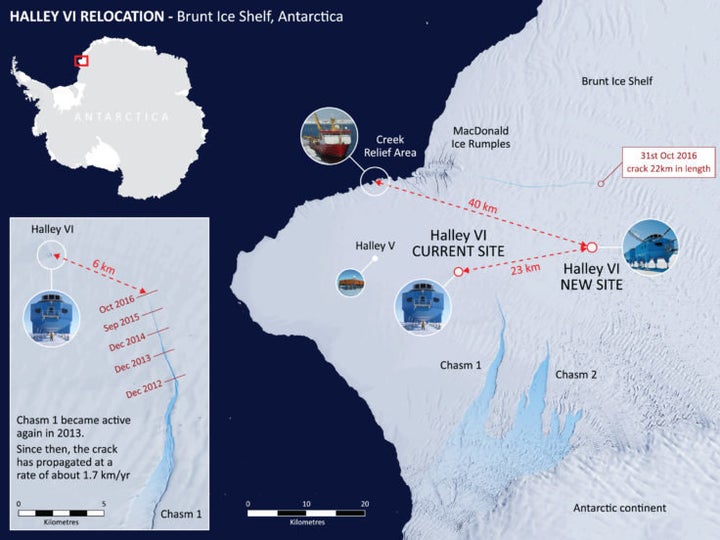A research station situated on an ice shelf in Antarctica is having to be relocated after scientists discovered dangerous cracks appearing that could eventually leave them adrift at sea.
The British Antarctic Survey confirmed that they are making preparations to move the Halley VI Research Station, which has been in the same position since 2012, to a new site 23 kilometres inland.

This is the first time that the station has been moved, and although it is designed to be moveable, the logistics of doing so mean it is not a decision taken lightly.
Tim Stockings, Director of Operations at British Antarctic Survey said: “Halley was designed and engineered specifically to be re-located in response to changes in the ice.”
The floating Brunt ice shelf, which is approximately 150 metres thick, has developed chasms - the most serious of all cracks as they go all the way down to the sea – which could potentially cut off the current location from the rest of the shelf.
In 2012 satellite monitoring revealed the first signs of the movement in a chasm that had otherwise lain dormant for 35 years. Since then it has propagated at a rate of about 1.7km a year.
But then in October this year, the situation escalated as another separate crack, measuring 22km in length, appeared to the north of the station, threatening essential supply routes from the sea.
Now operational teams have worked to identify a safe route across the ice to a new site that is further towards the centre of the ice shelf.
Not only does this move the station away from the chasms, but also from the edge of the shelf as it naturally flows at a rate of 0.4km per year west towards the sea where it calves off as icebergs.
Halley was responsible for the scientific investigations that lead to the discovery of the Antarctic ozone hole in 1985.
